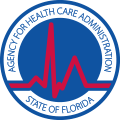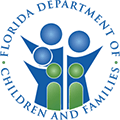Understanding Bipolar
What does bipolar disorder look like?
Bipolar disorder is a brain disorder that causes severe, unusual shifts in mood, energy, and activity levels. Additionally, individuals suffering with this disorder have a very difficult time carrying out their day-to-day tasks. The symptoms of bipolar disorder will differ depending on the type of bipolar disorder the individual has, but in all cases the mood symptoms experienced are significantly different than the normal ups and downs everyone experiences from time to time.
There are three primary types of bipolar disorder:
- Bipolar I disorder: includes manic episodes with or without the occurrence of depressive symptoms, or mixed episodes
- Bipolar II disorder: includes the presence of at least one hypomanic episode, a milder form of mania, and one major depressive episode
- Cyclothymic disorder: includes hypomanic-like symptoms and depressive symptoms, both of which are below threshold for meeting the criteria for either full mania or depression
The symptoms experienced during a manic episode include greatly enhanced energy levels, euphoria, less need for sleep, excessive talking, engagement in risky behavior, and sometimes delusional grandiose plans. Depressive episodes on the other hand involve extreme sadness, fatigue, impaired decision making, and the loss of motivation to carry out even the most important tasks.
Bipolar disorder can create a lot of distress and unpleasantness. The symptoms can result in broken relationships, job loss, decline in school productivity and achievement, and financial ruin. However, even though this disorder lasts a lifetime, it can be effectively treated with the appropriate medication and psychotherapy.
Statistics
Statistics on bipolar disorder
The 12 month prevalence rate for bipolar I for adults in the U.S. has been estimated to be 0.6%. There is no significant gender difference for this type. For bipolar II the 12 month prevalence rate of U.S. adults has been estimated at 0.8%. Similarly, there has been no gender differences discovered. While no 12 month prevalence rates have been reported, the lifetime prevalence rate for adults in the U.S. with cyclothymic disorder has been estimated to range from 0.4% to 1%.
Causes of Bipolar Disorder
What are the causes and risk factors of bipolar disorder?
While there is support for certain factors regarding their role in the development of bipolar disorders, it is generally agreed upon that ultimately it takes a combination of factors to cause this condition to manifest. It is also accepted that these disorders likely result from different combinations for different individuals and condition type.
Genetic: Bipolar disorder tends to run in families. Some researchers believe that there are certain genes that will make an individual more likely to develop bipolar disorder. Additionally, the development of bipolar disorder likely involves a number of gene mutations and chromosomal abnormalities, and the interaction of certain genes linked to mood and mood regulation.
Physical: Some research has shown that individuals who are diagnosed with bipolar disorder have a smaller prefrontal cortex that doesn’t function as well as other individuals. The prefrontal cortex is the area of the brain that is responsible for executive functions, such as problem solving and decision making. Abnormal development of this section of the brain may disrupt the ability of the brain to coordinate the processes of forming memories, learning, and controlling emotions.
Environmental: For those individuals who are genetically predisposed for bipolar disorder, certain life events may trigger a mood episode. Factors such as substance abuse, changes in health habits, or hormonal problems can all trigger an episode.
Risk Factors:
- Age (usually occurring between 15-30 years of age)
- Women have higher incidence of rapid cycling
- Men have more rates of early-onset bipolar
Signs and Symptoms of Bipolar Disorder
Learn more about the signs and symptoms of bipolar disorder
The symptoms of bipolar disorder are separated into their differing mood states and are listed below.
Manic/Hypomanic Symptoms (Hypomanic symptoms are the same as manic symptoms, just less severe):
- Excessively elevated mood
- Racing thoughts
- Flight of ideas
- Decreased ability to maintain attention or severe distractibility
- Impaired judgment
- Being overly optimistic
- Irritability
- Delusions of grandeur
- Engagement in risky behaviors
- Increased self-esteem
- Less need for sleep
- Decreased appetite
- Rapid speech or increased overall speech output
- Excessive energy and activity level
- Physical agitation, restlessness, the inability to sit still
Depressive Symptoms
- Depressed mood
- Loss of enjoyment in previously pleasurable activities
- Feeling numb or empty
- Change in appetite
- Weight fluctuations
- Sleeping significantly more or less than usual
- Psychomotor retardation or agitation
- Decreased energy, tiredness
- Loss of motivation to engage in even important activities
- Social withdrawal
- Inability to perform well at work or school
- Feeling worthless, shameful, or overly guilty without cause
- Difficulty concentrating, thinking logically, or paying attention
- Impaired decision making
- Difficulty remembering even recently learned information
- Thoughts of death, suicidal ideation
Effects of Bipolar Disorder
Understanding the effects of bipolar disorder
The consequences of living with untreated bipolar disorder will eventually affect every area of an individual’s life, along with the lives of those around them. The effects of bipolar disorder include:
- Increasing anxiety between mood states
- Family problems
- Damaged relationships, leading to the loss of a social support network
- Poor job or school performance, leading to lack of achievement or loss of job
- Reduced functional capacity
- Marital problems and divorce
- Legal problems
- Financial problems and increasing debt
- Physical problems from prolonged abuse of drugs, alcohol, or prescriptions taken in an effort to self-medicate
- Self-injury
- Suicide
- Sense of hopelessness and helplessness
- Increased need for physical health services
- Increased dependency on others for day-to-day functioning
Co-Occurring Disorders
Bipolar disorder and other co-occurring disorders
There are numerous different mental health disorders that may co-occur with bipolar disorders in adults. These include:
- Generalized anxiety disorder
- Substance/medication-induced anxiety disorder
- Anorexia
- Bulimia
- Binge eating disorder
- Adult ADHD
- Intermittent explosive disorder
- Substance use and alcohol disorders
- Specific phobias
- Social anxiety/social phobia
- Panic disorder











